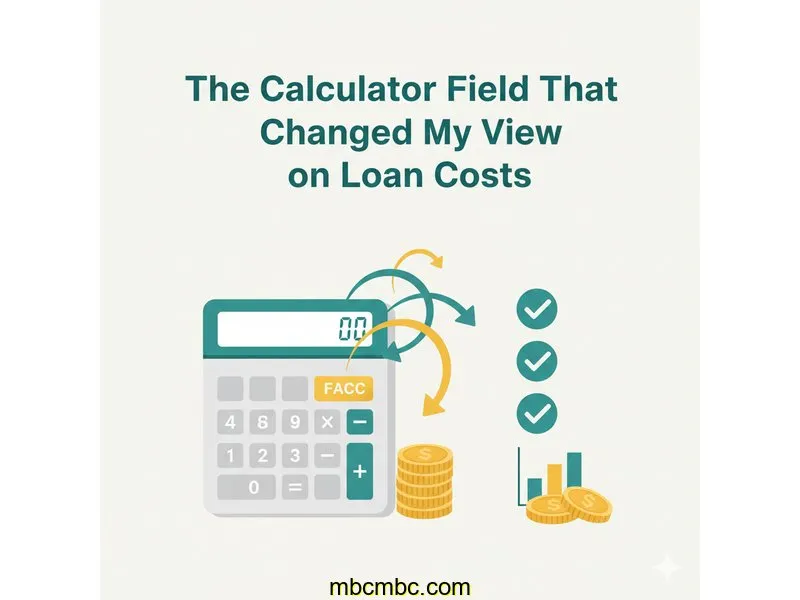
Auto Loan Calculator
Calculate payments over the life of your Loan
Home Blog Privacy Terms About Contact
Calculate payments over the life of your Loan
Home Blog Privacy Terms About ContactPublished on October 14, 2025

My journey into the world of loan calculations began not with a need for a loan, but with a simple, confusing conversation. A friend and I were talking about a hypothetical home improvement project, and we both looked up some example loan numbers online. He found a scenario with a monthly payment that seemed incredibly low, much lower than a similar one I'd found. "That seems like a great deal," I remember thinking. But he said something that stuck with me: "Yeah, the payment is low, but I'd end up paying way more in the long run."
That one sentence sent my mind spinning. How could a lower monthly payment result in paying more money? It felt counterintuitive, like a math puzzle I was missing a key piece to. Wasn't the goal always to find the lowest possible monthly payment? How could "cheaper" per month actually mean "more expensive" overall? My curiosity was officially piqued. I decided I had to understand the mechanics behind this. It wasn't about making a financial decision; it was about satisfying my own need to understand how the numbers truly worked.
My first stop was a basic online loan calculator. I typed in some numbers, hit "calculate," and saw a monthly payment pop up. It seemed simple enough. But my friend's comment echoed in my head. I realized I was only looking at one output. What other information was the calculator trying to show me? What was I missing? This kicked off a weekend of exploration, playing with numbers and trying to decode the language of loans.
This article is a chronicle of that learning process. It's about my personal journey to understand how loan calculations work and how to use the tools designed to help us see the bigger picture. This is about understanding the math, not giving financial advice. My goal is to share what I discovered, one calculation at a time.
Armed with my newfound curiosity, I set up a direct comparison to replicate the scenario my friend described. I wanted to see the numbers side-by-side. I decided to use the same loan amount and interest rate for both examples, changing only the loan term. This way, I could isolate what was causing the difference.
Here was my test case: a loan for $14,850 at a 7.2% annual interest rate.
First, I entered the numbers for a longer-term loan, similar to what my friend had seen. I put in the loan amount, the interest rate, and a term of 72 months (6 years). The calculator instantly spit out a number: the monthly payment was $254.55. "Okay," I thought, "that's a manageable monthly figure." My brain immediately categorized this as the 'affordable' option.
Next, I ran the numbers for a shorter term. I kept the loan amount and interest rate exactly the same but changed the term to 48 months (4 years). The new monthly payment was $358.33. My initial, untrained reaction was one of rejection. That's over $100 more each month! Clearly, the 72-month option was better, right? My focus was entirely on that one number: the monthly payment. It was the only metric I thought mattered.
This is where my frustration began. I knew my friend's warning meant there was more to the story, but the calculator's primary, bolded output seemed to scream that a lower payment was the winner. I felt like the tool was hiding the truth in plain sight. I stared at the results page, looking at the payment figures again and again, feeling like I was missing something obvious. Why would anyone choose to pay $358.33 when they could pay $254.55? The math just didn't seem to support my friend's logic, and I was stuck.
The breakthrough came when I stopped just glancing at the results. Frustrated, I decided to examine every single pixel of the calculator's output page. My eyes scanned past the big, bold monthly payment number and landed on a few smaller lines of text underneath it. They were labeled "Total Principal Paid," "Total Interest Paid," and "Total Cost of Loan." It was the "Total Interest Paid" field that stopped me in my tracks.
I decided to run my two scenarios again, but this time, I would write down every single output number, not just the monthly payment. This simple act of documenting everything forced me to see the complete picture that the calculator had been showing me all along.
The core of my discovery was understanding the role of the loan term. I learned that a loan term isn't just a divisor for the principal; it's a multiplier for the interest. With a longer term, you're spreading the principal payments out, which sounds good. However, because the outstanding balance remains higher for a longer period, interest accrues for more months. Each extra month is another opportunity for interest to be calculated on what you still owe.
Suddenly, the numbers made perfect sense. The 72-month loan had a lower payment because I was making 24 extra payments compared to the 48-month loan. Those extra 24 payments were mostly covering the interest that was accumulating during those two additional years.
My entire perspective shifted from focusing on "monthly affordability" to "total cost." The monthly payment tells you what you need to budget for each month, but the total interest paid tells you the actual price of borrowing the money. Seeing that the 72-month loan would cost me $3,477.60 in interest, while the 48-month loan would cost $2,349.84, was staggering. The lower monthly payment came at an extra cost of over $1,100.
To confirm my new knowledge, I ran a third scenario: what if I chose a 36-month (3-year) term? As I predicted, the monthly payment shot up to $464.71. But when I looked at the "Total Interest Paid" field, it had dropped to just $1,879.56. This test solidified my understanding. There is an inverse relationship between the monthly payment and the total interest paid, all driven by the length of the term. The calculator wasn't hiding anything; I just hadn't learned how to read the whole story it was telling.
This whole experience was a crash course in financial literacy for me. It wasn't about finding a "good" or "bad" loan, but about learning to interpret the numbers so I could understand the full context. Playing with calculators and seeing the outputs change in real-time was incredibly insightful. Here are the key lessons I took away about the calculations themselves:

From my learning journey, I realized it's the number that represents the true cost of borrowing. The loan amount is money you borrow and pay back, but the interest is the additional fee for the service of the loan. Understanding this number helps you see the full financial picture beyond just the monthly payment.
The loan term determines how many times interest is calculated on your remaining balance. A longer term, like 72 months instead of 48, means you have 24 extra months where interest accrues. Even though your monthly payments are smaller, you're carrying a balance for longer, allowing more interest to build up over that extended period.
Absolutely. This was the core of my discovery. My example used two loans with the exact same 7.2% interest rate. The one with the 72-month term cost over $1,100 more in total interest than the one with the 48-month term. The term is a critical variable in the overall cost calculation.
It's a detailed, payment-by-payment breakdown of the loan. For each payment, it shows you precisely how many dollars are going toward the interest and how many are going toward paying down your principal (the original loan amount). It's a great tool for visualizing how your debt decreases over time and for seeing how much of your early payments are consumed by interest charges.
My biggest takeaway from this deep dive is that understanding loan math isn't about finding a secret formula or a trick. It's about learning to read the whole story that the numbers are telling. I went from being fixated on a single, misleading data point—the monthly payment—to appreciating the relationship between all the variables: principal, interest rate, term, and total cost.
For me, the online loan calculator transformed from a simple answer machine into an interactive learning device. By treating it like a sandbox, I could build and compare different scenarios, which made abstract concepts feel tangible. It showed me that a lower monthly payment isn't inherently "better," it's simply different, and it comes with a trade-off, which is often a higher total cost.
I feel much more confident in my ability to understand the mechanics of a loan now. I hope sharing my personal "aha" moment encourages others to get curious, play with the numbers, and learn the language of these calculations for themselves.
This article is about understanding calculations and using tools. For financial decisions, always consult a qualified financial professional.
Disclaimer: This article documents my personal journey learning about loan calculations and how to use financial calculators. This is educational content about understanding math and using tools—not financial advice. Actual loan terms, rates, and costs vary based on individual circumstances, creditworthiness, and lender policies. Calculator results are estimates for educational purposes. Always verify calculations with your lender and consult a qualified financial advisor before making any financial decisions.
